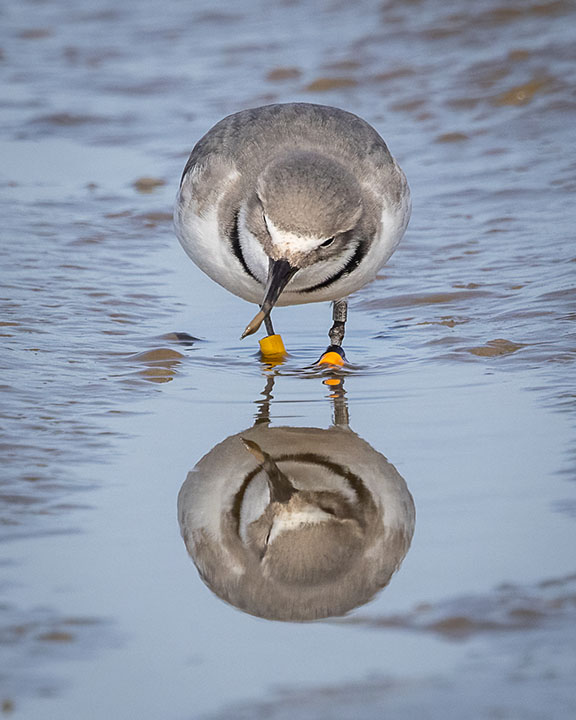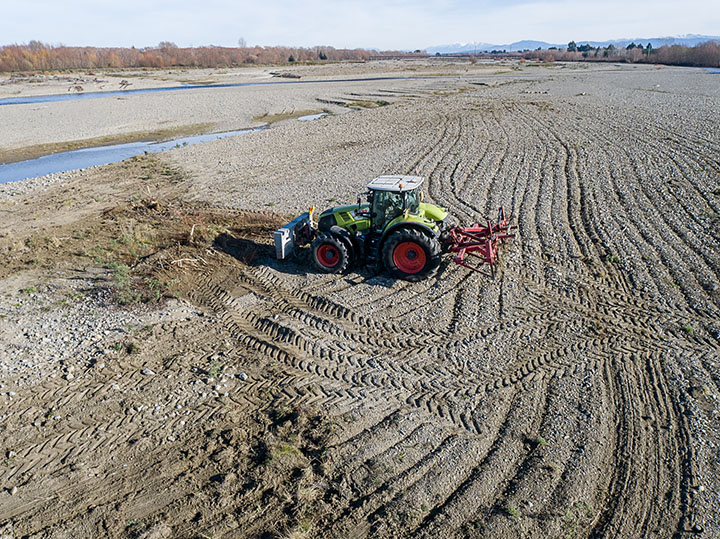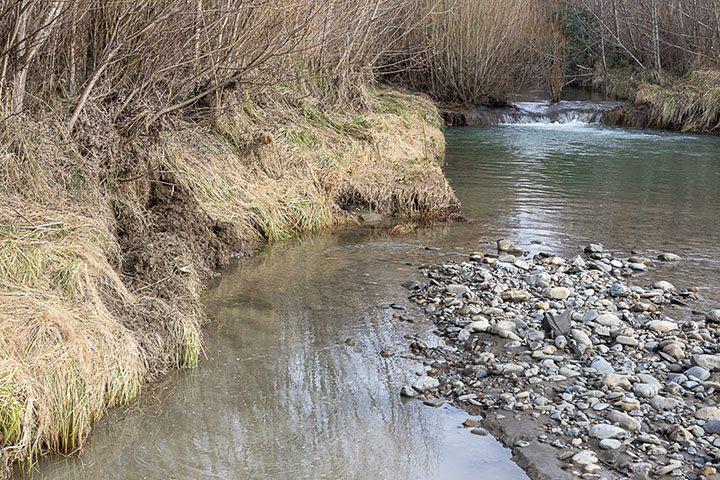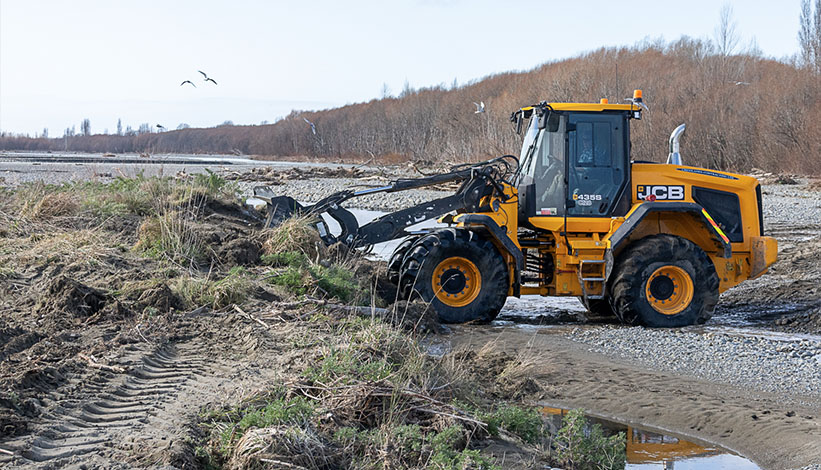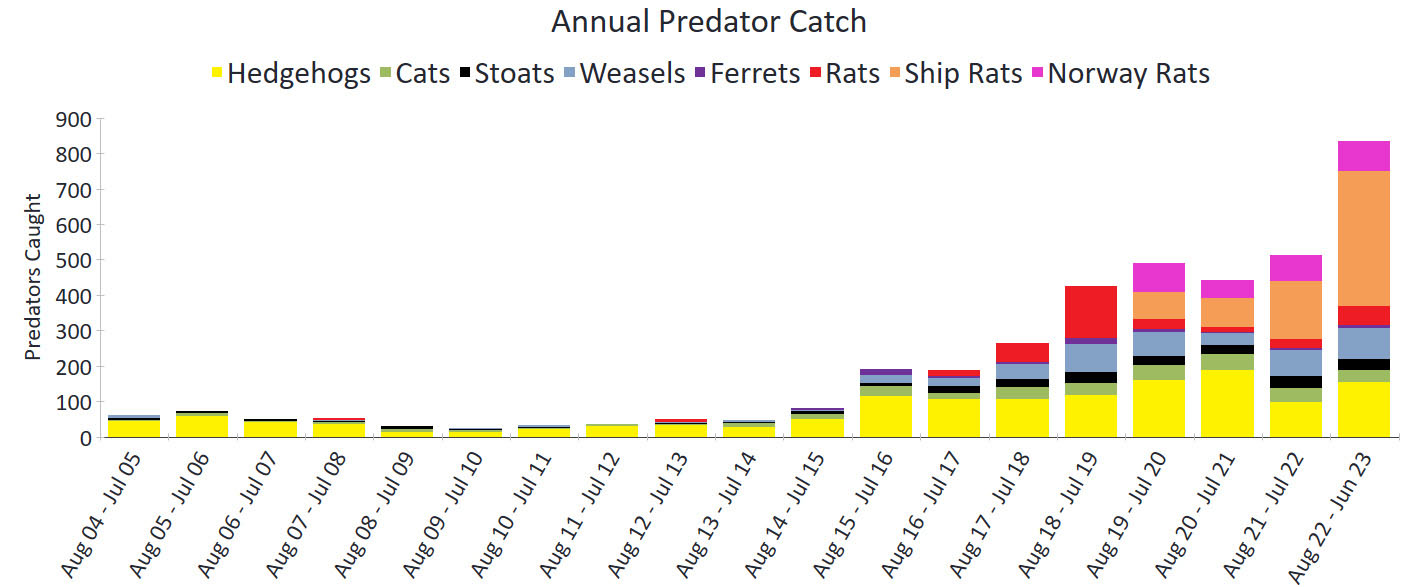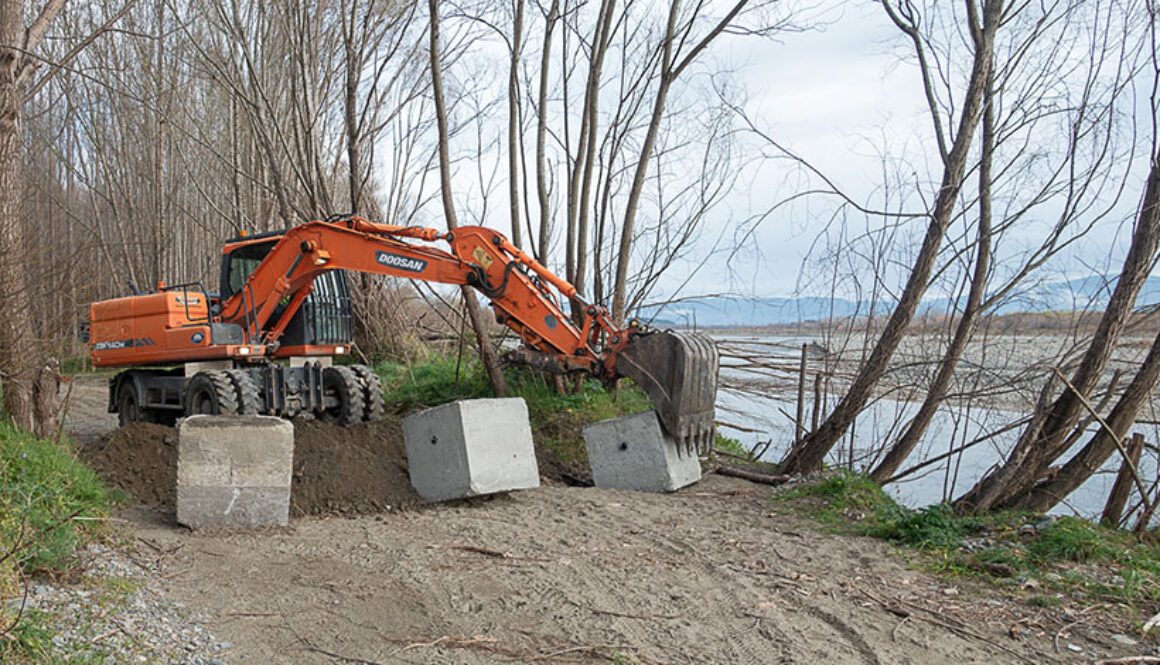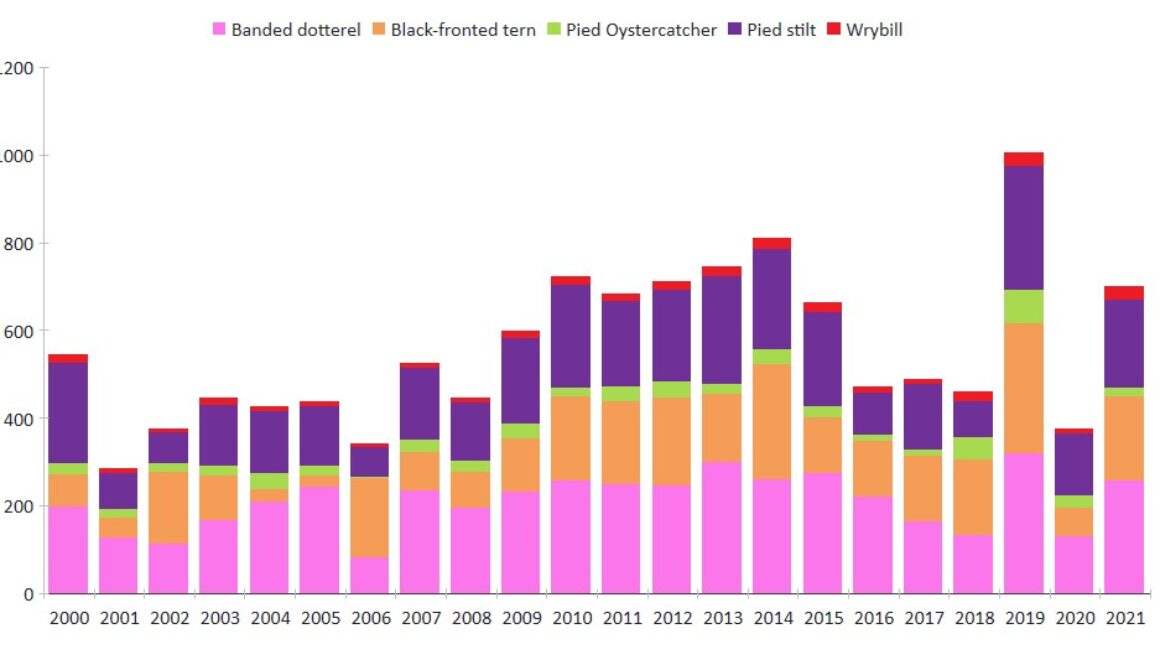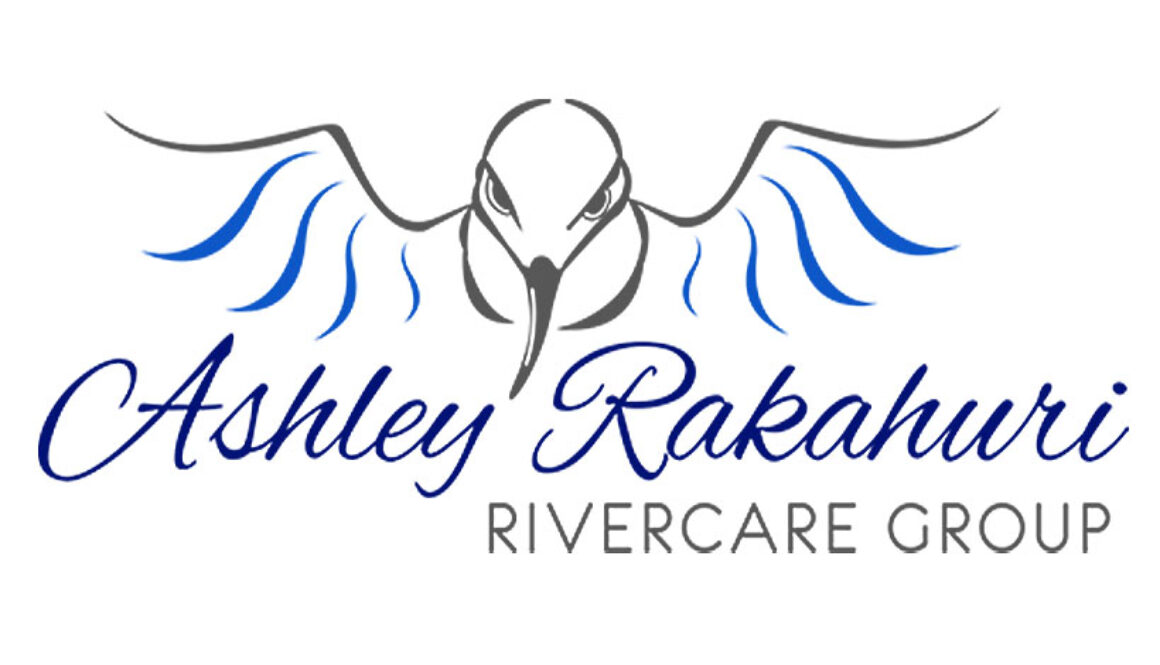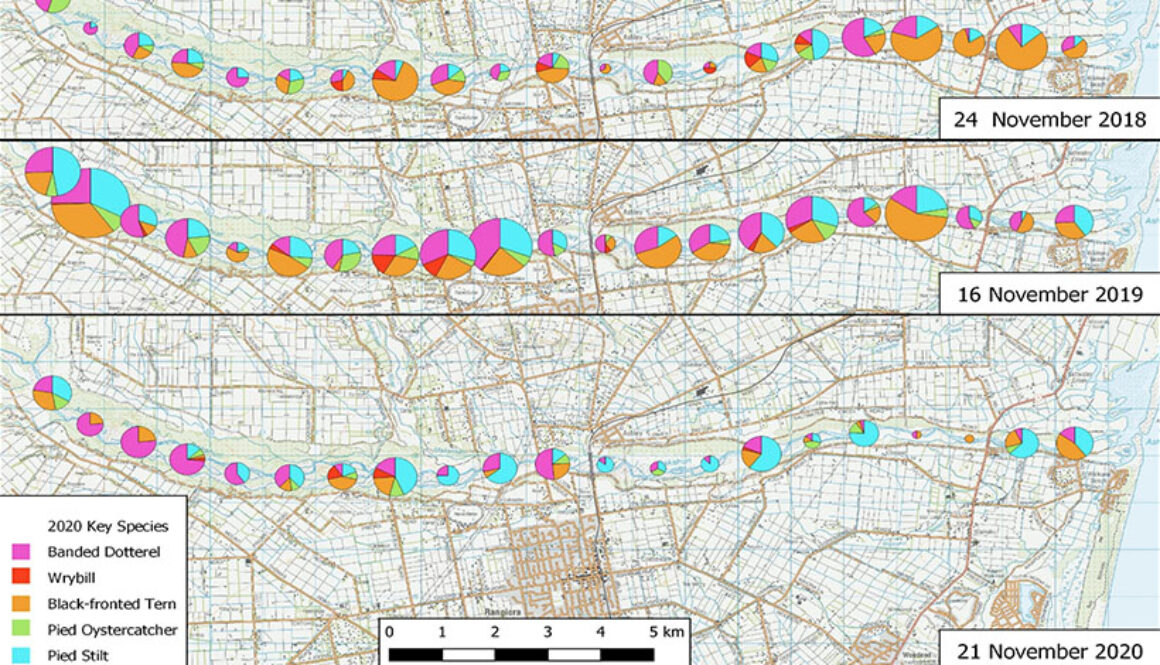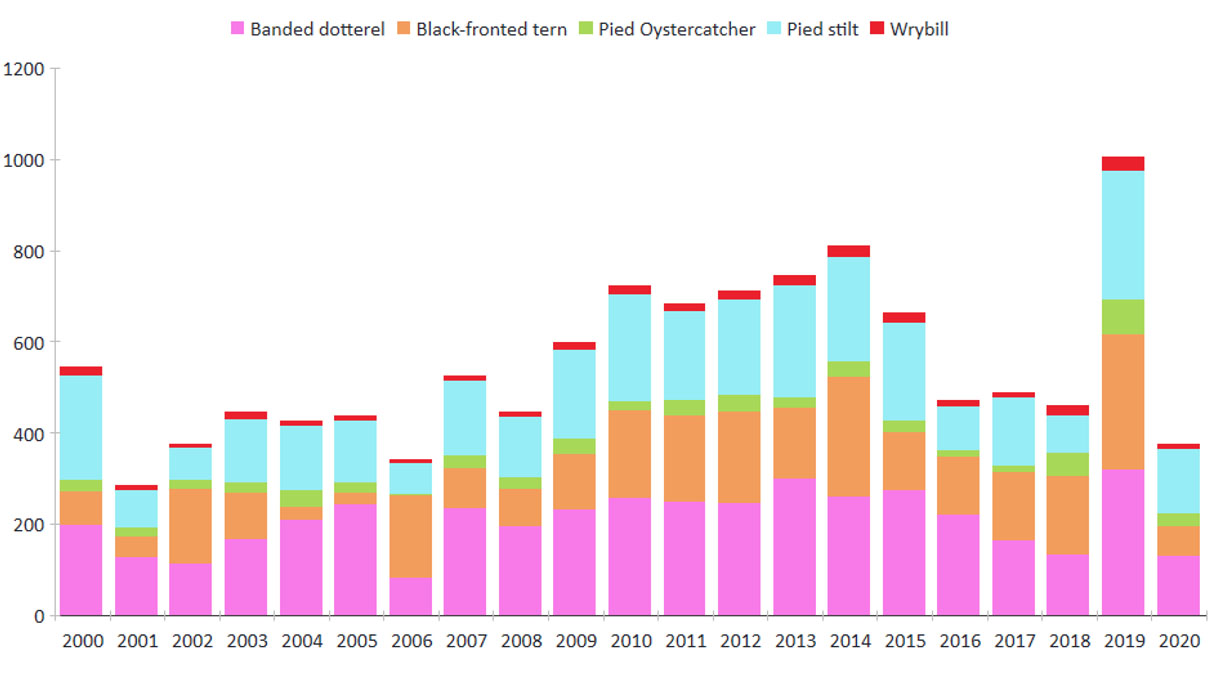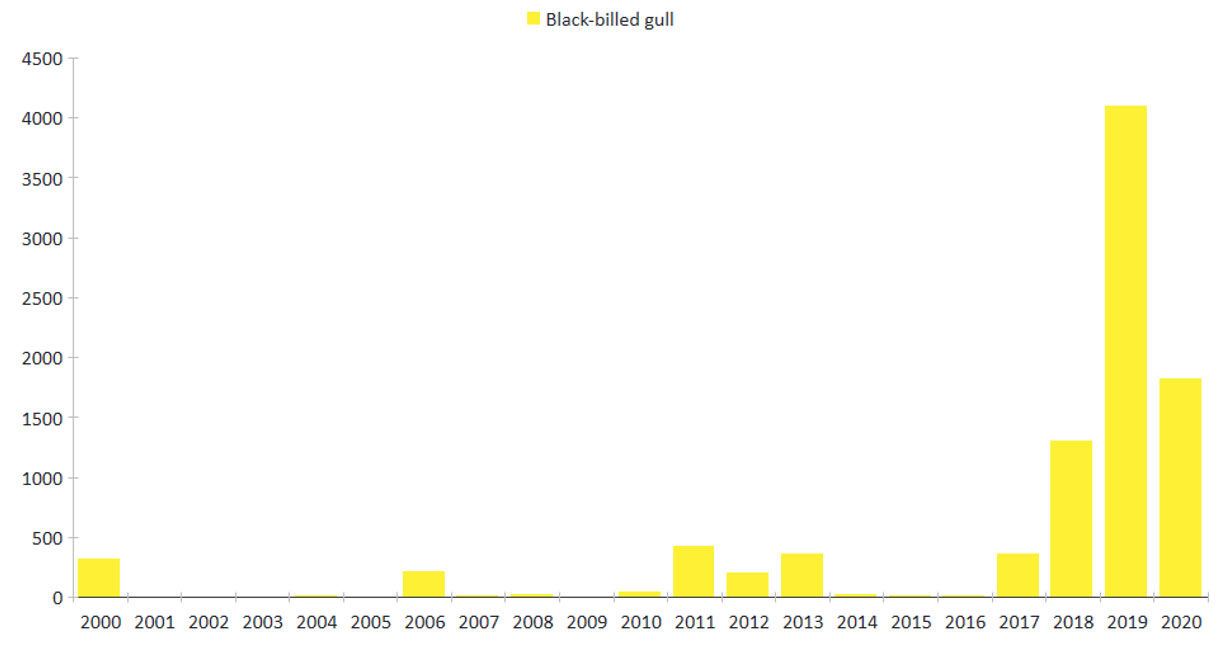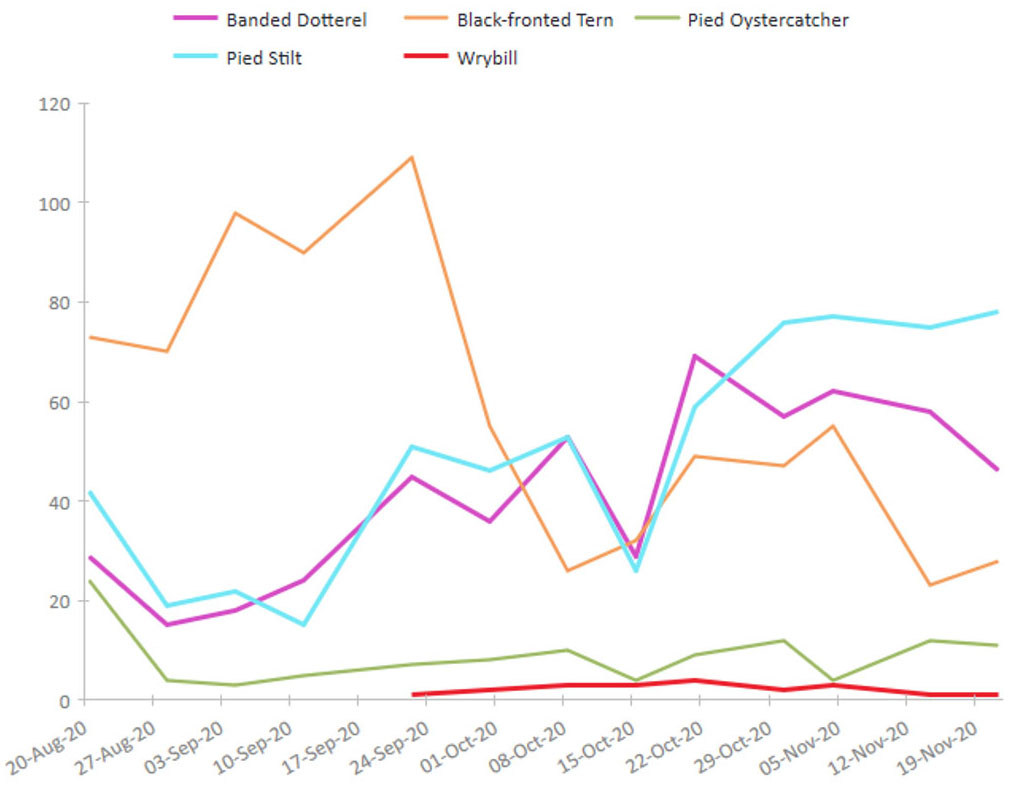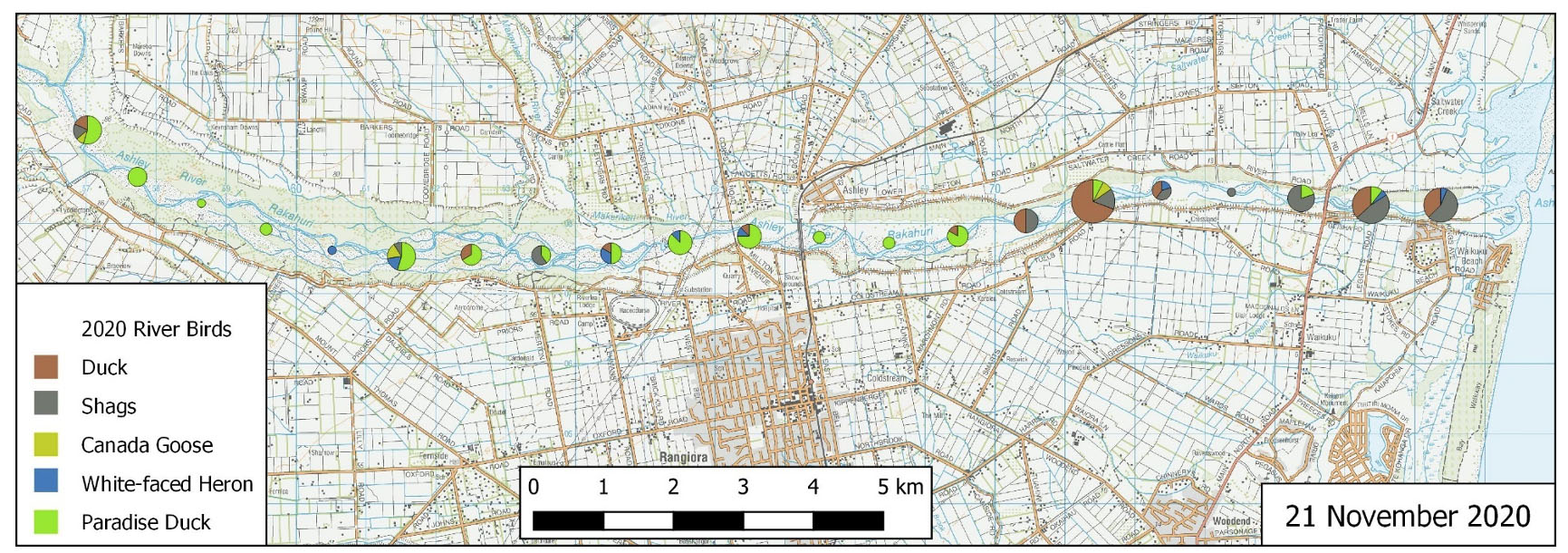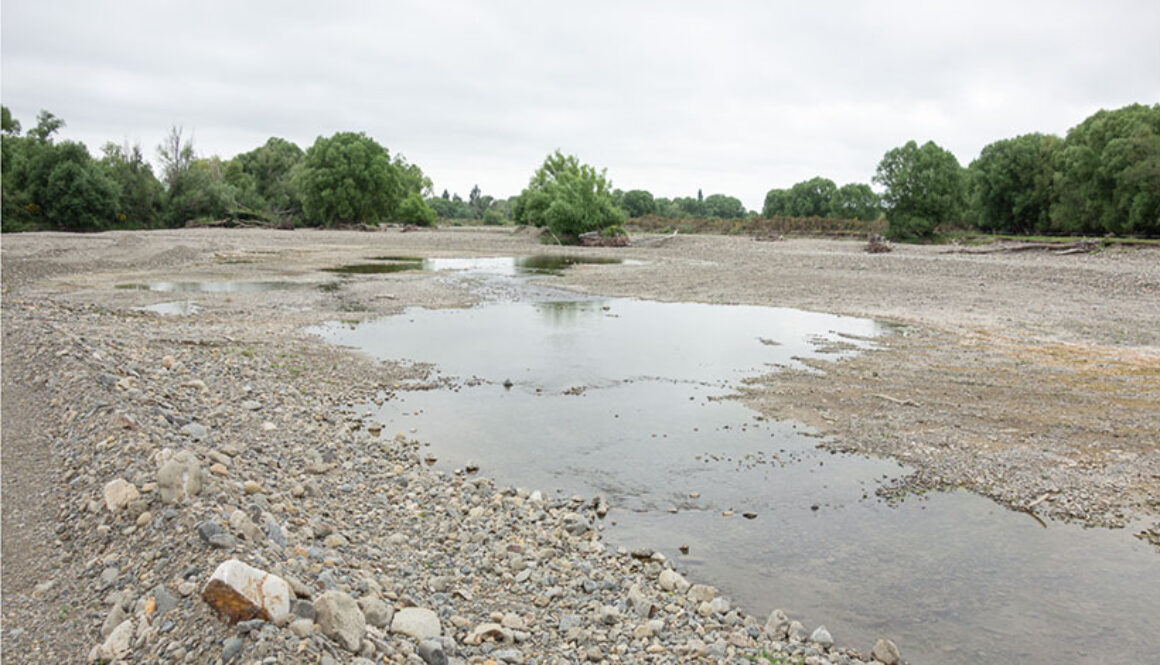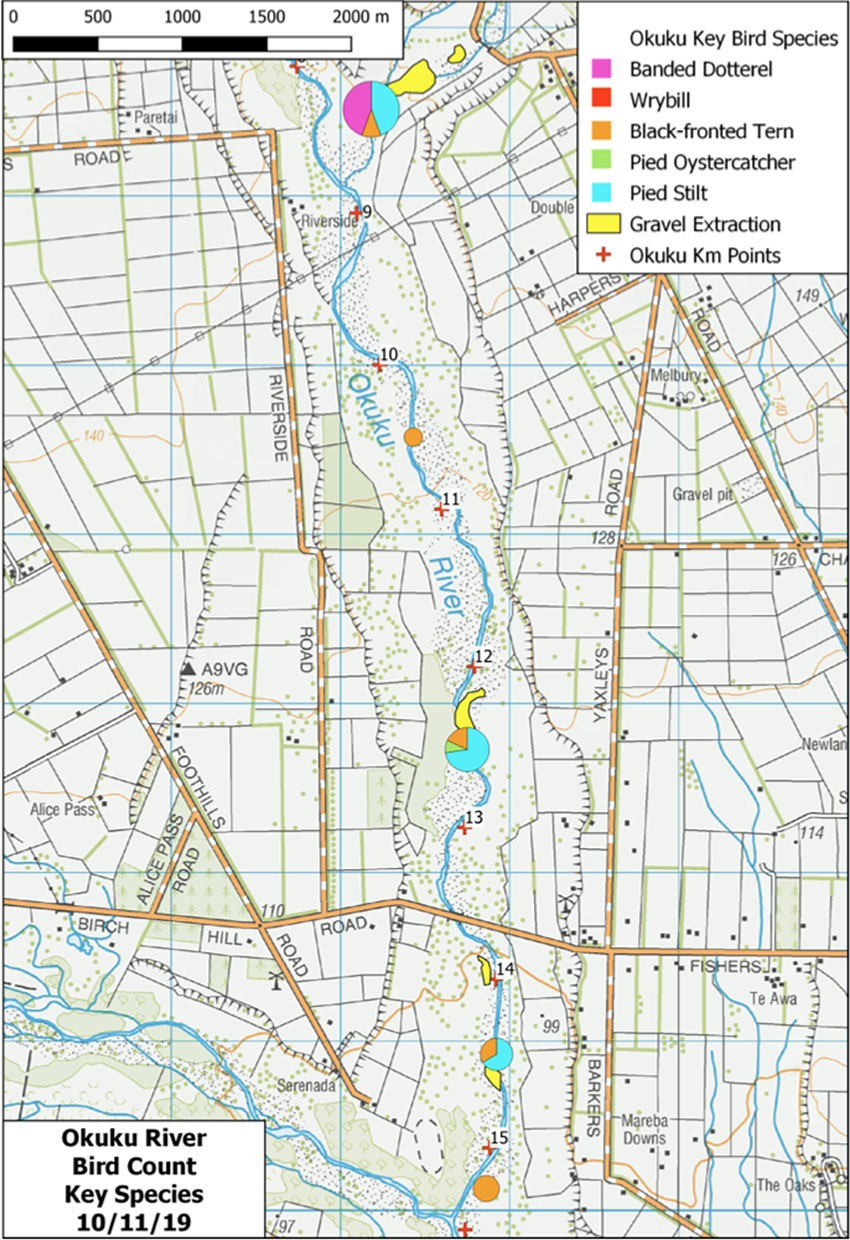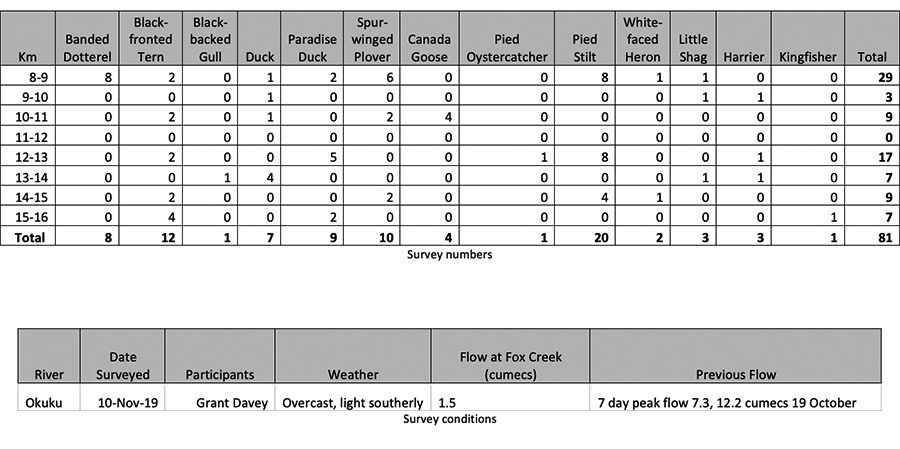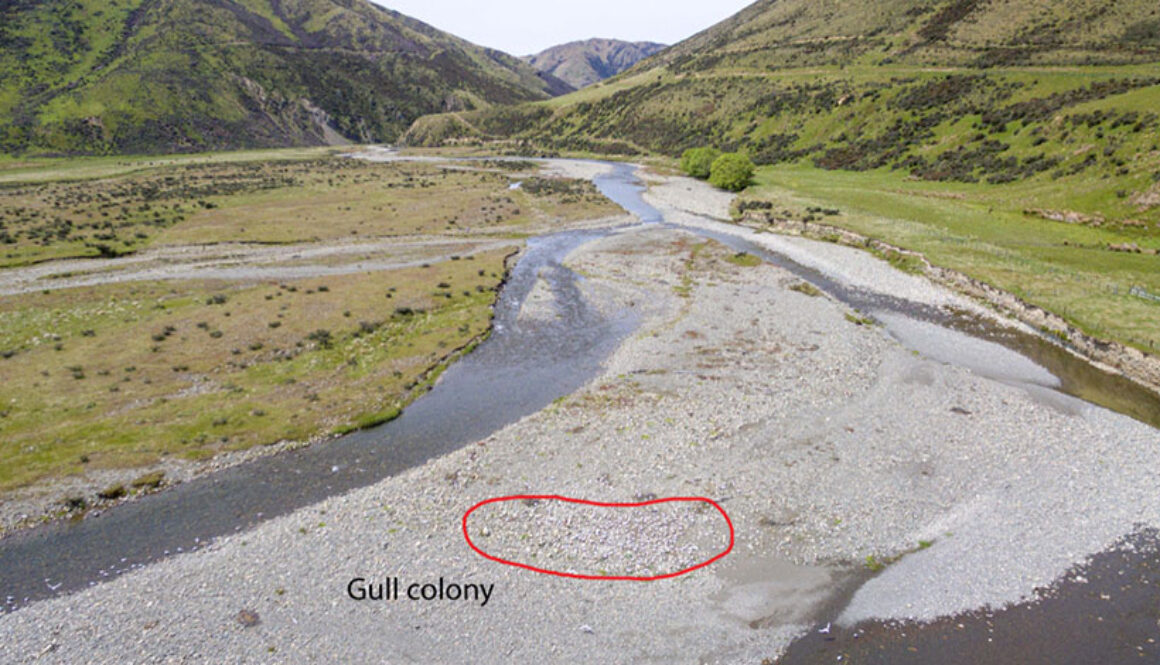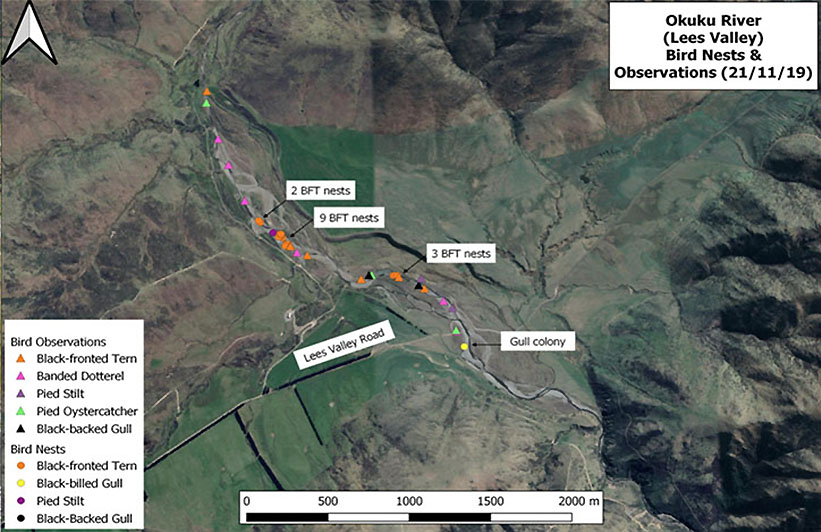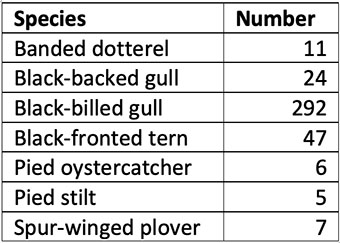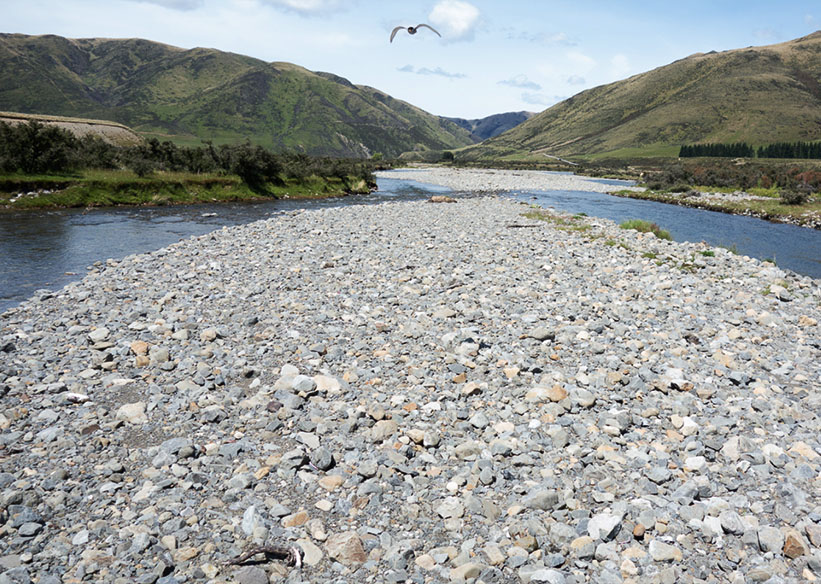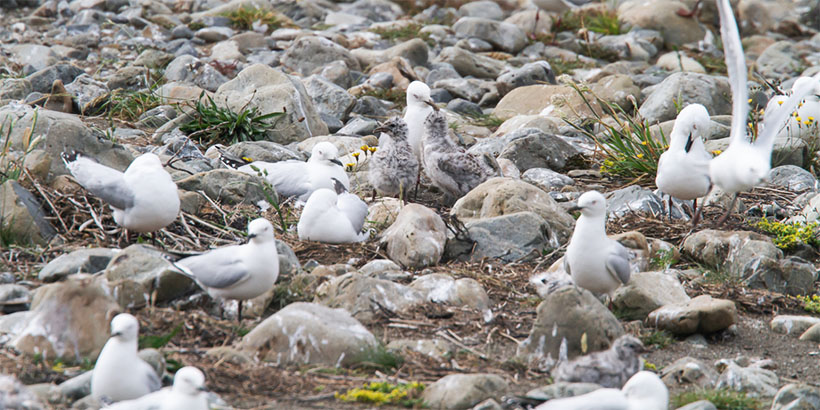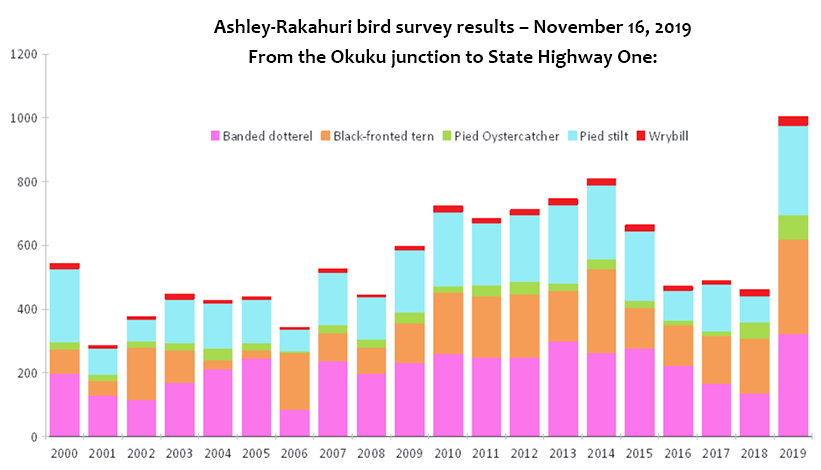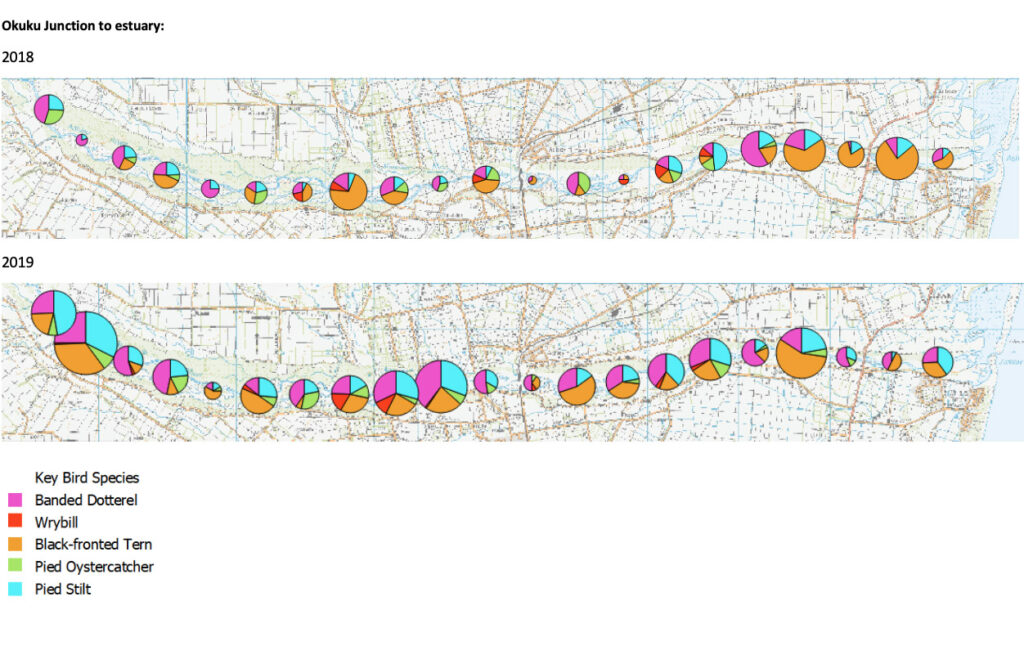The last Update was written in August 2021, so much has happened since then. The main events have been our annual bird survey in November, and our monitoring of a full 2021-22 breeding season. It is these two activities which are key to determining whether we are succeeding in our mission of ‘protecting birds and their habitat in the Ashley River/Rakahuri’.
The birds
Annual survey. The 20 November Ashley-Rakahuri (A-R) survey attracted a record number of 23 people, who covered the 21km between the Okuku confluence and the SH1 bridge in 4 groups – most finishing by 1pm. The numbers of birds counted are shown in the figure above (prepared by Grant Davey).
This appears to show a recovering population, heading back towards the highest numbers of 2014. However, we are suspicious about this, as close observation on the river prior to the survey indicated far fewer birds. We think the explanation is connected to floods in the Waimakariri at the time of the survey, which caused birds to retreat to the A-R. Whatever the reason, there were record numbers of nearly all species. The total wrybill count was 30, higher than the previous record of 27 in 2019 (which was also a year when birds were being flooded out of the Waimakariri). Without this invasion, the low numbers of the last few years in the Ashley would almost certainly have continued. But it does show the importance of the A-R as a flood haven for birds washed out from the much bigger main divide-fed rivers.
Last year, our survey data since 2000 was sent for consideration by a national panel reviewing the NZ Threat Classification System. As they said in a ‘thank-you’ message, such long-term datasets are extremely valuable. From our data, they calculated that the numbers of black-fronted terns seen on the A-R have increased significantly, by an average of 5.4% per annum; wrybills have increased by 3.8%, and banded dotterels by 1.8% (although they have declined since 2015 – as seems to be the case nationally). Black-billed gull numbers have also increased markedly. We used to have a breeding colony only every 2-3 years, whereas they have turned up almost annually since 2016. We will never know exactly, but our management is likely to be behind these increases in bird numbers on the A-R.
The breeding season. Due to the record floods in May/June last year, the birds returned to find an almost weed-free A-R. Such disturbance to core aquatic insect food sources may have been a reason why the season got off to a slow start. But we ended up with 13 wrybill taking up territories – the previous highest being 10. Eight chicks fledged to give a productivity of 0.62. This is the most pairs and the second most fledglings on record, but productivity was below average. We located 96 black-fronted tern nests, but only 11 fledglings have been seen, mainly due to predation. Entire colonies were lost to rats, plus a flood did not help. Consequently, many nests would have been second attempts, some perhaps even third. Such fickle tern breeding has been par for the course over most years, and it is surprising that overall numbers have actually increased. For the first time since 2016, there was no large black-billed gull colony on (or close to) the main riverbed, but a large colony of many hundred nests formed (twice) at the estuary. The second effort was successful, with many hundreds of fledglings produced. Our other focus species (banded dotterels, pied stilts and South Island pied oystercatchers) appeared to have reasonable seasons, but too few nests were found to measure success. We plan to monitor them more closely next season. Plus we hope to engage a student to start monitoring bird breeding around the estuary (never done before).
Maintaining habitat
Weed invasion. This remains our greatest threat, as although the record May/June floods swept the riverbed clean, the weeds have rapidly returned. We have been meeting with ECan to discuss how we can remove weeds while they are small (with most yet to seed). The recent good February flood did more clearance, and we plan to clear much of the rest from favoured areas within the next 2 months. If successful this would be a major advance in management. Once the large operational clearances have been completed, we could well use volunteers to hand clear the gaps.
Gravel extraction. This is the main commercial activity undertaken on the river. Although gravel extraction can assist the birds by removing weeds, there are many examples which show that it can also create problems if not carried out properly. We are not happy with recent consent applications, and the history of compliance monitoring being carried out appropriately is not good. Plus, and perhaps most importantly, safety aspects associated with gravel extraction need improvement. These concerns have been pointed out to ECan, and it may be that, in order to bring about much needed changes, we have to go more public in the near future.
Flood control management. We fully agree that flood control should be the No. 1 goal, but we are concerned about how this is being carried out. All experts agree that in order to maintain the characteristic features of a braided river, it must be given room to move, but current management has resulted in excessive berm planting, which is leading to the A-R fairway becoming overly constricted. ECan has recently made environmental considerations a much higher priority for management, and we are to be involved in discussions to this end, so we are hopeful of changes in the right direction.
Predator trapping
This remains our major commitment in terms of personnel and operational hours involved – and continues all year round, both alongside the river and around the estuary. Currently there are 182 traps along the river and 102 at the estuary, serviced at least monthly by 26 volunteer trappers. In addition, during the season, there are around 60 traps (mostly run-through DOC150s) managed separately around breeding birds. As the discussion below indicates, even though the current trapping effort remains significant and important, we know we should be having a greater impact on predator numbers.
Trap catch. Alongside the river. Despite the consistent trapping effort, results show that the trap-catch rate has been static over recent years – at around 0.5 predators caught per 100 trap nights. Over the last 3 years, we have caught more than half the total number of predators since we began trapping in 2004. At that time, the major catch was hedgehogs. These still remain predominant, but have been joined in recent years by rats, which were rarely caught before 2016. Ship rats have been responsible for nearly all bird losses over the past season. It is interesting to note that stoats were slightly more common than weasels until around 2016, but have well outnumbered the former ever since.
Around the estuary. The composition of predators caught alongside the river is very different to that caught at the estuary. Compared to the river, the estuary has a higher percentage of rats (54% estuary; 37% river), stoats (14%; 6%) and weasels (22%; 14%), but a lower percentage of hedgehogs (6%; 34%) and feral cats (4%; 9%). The reasons for this are unknown. We have only been trapping around the estuary for 3 years, but it appears that the catch is decreasing over time. This could be due to our trapping, but it could also be because we have a much greater trap density than along the river
How effective are traps? As mentioned in the August update, we have long suspected that many predators visiting trap sites do not get caught. A trail camera/trap project undertaken a year ago by a student, Quill Yates, confirmed this. Almost 20,000 images were analysed. The main finding was that only 8.3% of predator visits resulted in successful catches. The percentage caught / visit for feral cats, rats and hedgehogs were 2%, 22% and 23% respectively. The traps had visits from 50 cats, and Quill went to some trouble to identify 20 different individuals. Only a single cat was caught, even though on 35% of visits, they put their heads into the Timms trap openings but did not trigger them. Too few mustelids (ferrets, stoats and weasels) were caught to allow for any analyses to be done.
Trapping review. A year ago, ECan agreed to fund a review of our trapping strategy, including the possibility of doubling our trap numbers by installing a double line alongside the river. A contractor has just completed this review which should be available for reading in the near future.
Public relations and human disturbance on the riverbed
We continue to make sure the public are well informed – via media articles, presentations and talks, displays, Facebook and website. How we manage the latter is currently being reviewed. It is well worth listening to our monthly interviews on the local CompassFM radio station. A large new interpretation panel will be erected by the Cones Road bridge picnic area in the near future. As in previous seasons, 4WD access ways which were blocked in September, have just been cleared. There is little doubt that this has resulted in significantly less vehicle disturbance during the past breeding season.
Finances
The Group is always closely following its accounts and budget situation – and generally our finances are in good shape. We are now mostly self-funded for our day-to-day existence, with monies coming from donations, our trap making and selling, and sponsorship via Karikaas Natural Dairy Products Ltd cheese sales. Funds for larger special projects usually come from ECan.
Reports
For over a year, ECan has been drafting a long-term management plan for the Ashley-Rakahuri River. This will be available to us within the next 2 months, and should shape where we head in the future. The annual report for 2020-21 has been completed and is now available. Internally, there have been a number of other reports written, mainly by Grant Davey.
Group structure and meetings
In addition to the normal committee hierarchy of chair, secretary and treasurer, we have created three management teams – operations, communication and administration. It was felt that such a structure will lead to less work required by any one individual. At our last AGM, the Group chair, Nick Ledgard, stepped down after 20 years in that position, to be replaced by Sue Mardon. More recently, our Secretary, Joan Miles, also retired after 20 years of service to the Group. In the near future, we plan to have a SWOT (strengths, weaknesses, opportunities, threats) gathering, in order to review our composition and where we think we should be headed.
As usual, many thanks to all our volunteers for the time taken to support our cause.
Sue Mardon
Chair, ARRG
